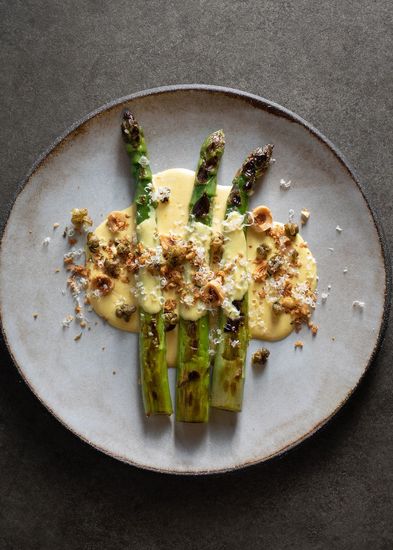Page Turner / Edited by Peter McDermott
In the 1970s and ’80s, news relating to Latin American politics was almost never good, and it was often shocking. Take, for example, the events of the morning of Sept. 21, 1976. At 9:30, a car carrying three people was ripped apart by a bomb as it passed the Irish Embassy in Washington. The driver, who had been a senior Chilean politician and diplomat, died 30 minutes later in hospital. His American assistant survived, but the assistant’s wife and co-worker succumbed to her injuries at 10:50. A native of Passaic, N.J., she was 32. General Pinochet had sent her killers.
That act of state-sponsored terrorism wasn’t the first time that Americans became victims of forces considered friends and allies by officials high up in the U.S. government, and nor would it be the last.
Eileen Markey has written a biography of another such casualty, one who perished with three fellow Americans in El Salvador on Dec. 2, 1980. Actor Martin Sheen has praised its “beautifully told narrative,” while Fr. James Martin, editor-at-large for America magazine, described it as a “riveting portrait of a hidden saint. A stunning story that should be known by all who love the Gospel. And all who love.”
“God in Proof” author Nathan Schneider said that Markey’s “A Radical Faith: The Assassination of Sister Maura” is a “spiritual and political thriller that is meanwhile a tender chronicle of one woman’s journey into history.”
Markey said of Maura Clarke, who was raised by Irish immigrant parents: “Her death is well known in certain quarters, but this book examines her life, asking how a nice girl from Rockaway, Queens, could get to a hastily dug grave at the edge of the Cold War.”
She added: “Maura was helping people who were being mowed down by a brutal right-wing government.”
They were known as the “four churchwomen,” beaten, raped and murdered by a U.S.-trained military death squad. As they became mythologized and even demonized in death, the details of their actual lives and commitment were forgotten. The other three were: Clarke’s fellow Irish New Yorker and Maryknoll Sister Ita Ford, 40, who had previously worked with the poor in Pinochet’s Chile, Ursuline Sister Dorothy Kazel, 41, and the idealistic 27-year-old lay missionary Jean Donovan, who’d spent an undergraduate year at University College Cork. There she met a priest who’d been a missionary in Peru.
Weeks before her death, Donovan wrote to a friend that her heart “sank low” when the Peace Corps was withdrawn from the worsening situation. “Several times I have decided to leave El Salvador,” said the Connecticut woman, then in her fourth year in the country. “I almost could, except for the children, the poor, bruised victims of this insanity. Who would care for them?”
Clarke had been based mostly in Central America for the last 21 years of her life; but hers is also a story of Ireland, Irish America and post-war U.S. Catholicism. She made a trip to her parents’ homeland in the summer of 1950, just before joining the Maryknoll Sisters. Among those who impressed the 19-year-old Clarke was her father’s older first cousin Linda Kearns MacWhinney, who as an apolitical 28-year-old nurse became swept up in the events of Easter Week, 1916, and was later involved in the Irish War of Independence and with the anti-Treaty side in the Civil War. In the 1920s, she was an emissary abroad for Éamon de Valera and a Fianna Fáil senator in the 1930s when he was taoiseach.
Markey is herself the granddaughter of 1920s immigrants who came from Counties Donegal, Limerick and Armagh. A graduate of Fordham University and Columbia University Graduate School of Journalism, she has had a distinguished career reporting in the New York metropolitan area and from abroad.
“I became a reporter after I cut English class junior year of high school to listen to a reporter from the local newspaper talk to the journalism class next door,” Markey recalled. “In the English class we were going to discuss Henry David Thoreau's ‘Walden’ and I'd written out W.B. Yeats's ‘Lake Isle of Innisfree’ because Thoreau reminded me of what Yeats was saying. As I get older, after all this time in the city, I hear that lake water lapping – ‘While I stand on the roadway, or on the pavements grey, I hear it in the deep heart’s core.’”
PHOTO BY ADI TALWAR
Eileen Markey
Date of birth: April 2, 1976
Place of birth: Springfield, Mass.
Spouse: Jarrett Murphy
Children: Owen, 13, and Hugh, 6
Residence: a row house in the Bronx.
What is your writing routine? Are there ideal conditions?
I think because I began my career as a newspaper reporter my sort of circadian rhythm of writing is to putz around all day and then be really productive between 4 and 7 p.m., but those are the prime parenting hours of after school and dinner. So for the book after my husband got home I would sequester myself in a little room we built in a corner of the bedroom, or I'd go to the Fordham Library and stay there until it closed at 2 am or to An Beal Bocht in Riverdale and sit in the backroom. The hardest thing for me is getting focused and separated from daily life. Writing feels almost furtive. Once I begin I'll write in a marathon of 10 and 12 hours if I have the space. But I've come to accept that the avoidance and finding chores and doing other things is part of the process. It's necessary to let complex thoughts ferment and bloom – within reason. There's nothing like a deadline to focus the mind.
What advice do you have for aspiring writers?
Report. Learn something first. Even great fiction is grounded in careful research. There is this endless pool of “here's what I think” written these days by everyone with an internet connection. That rarely serves anyone. Go outside yourself and learn what other people think. And then obviously read, read, read. You need to have drunk a lot of words, an ocean of beautiful and balanced sentences if you are going to produce anything worth reading.
Name three books that are memorable in terms of your reading pleasure.
“Let the Great World Spin,” by Colm McCann; “Americanah,” by Chimamanda Ngozi Adichie and “The God of Small Things,” by Arundhati Roy – although obviously there are dozens more. I still remember the sensation of looking up from “Ramona Quimby, Age 8,” by Beverly Cleary, probably when I was about 8 and being shocked that it was a sunny afternoon. It was raining in the book and I could feel the damp.
What book are you currently reading?
I used to be very straight and narrow and read one book until I finished – and never let myself not finish it – but I've grown promiscuous. I'm reading a book called “Rebel Girl,” the autobiography of Elizabeth Gurley Flynn, a radical labor activist (and Irish-American Bronxite) and contemporary of Mother Jones and Tom Haywood. But I'm also reading the much-awaited final installment of the comprehensive Eleanor Roosevelt biography by Blanche Wiesen Cook and “Necessary Trouble: Americans in Revolt,” by fellow Nation Books writer Sarah Jaffe.
Is there a book you wish you had written?
Oh, I just think I'd like to be Colum McCann, or be that deeply humane with such a light touch.
If you could meet one author, living or dead, who would it be?
That's a tall order, to narrow it down to one. But I think Graham Greene – because he brings together so many strands of what it is to be human and lost, because he dwells in moral ambiguity better than anyone – and because he'd probably enjoy a whiskey.
What book changed your life?
“Anne of Green Gables” got me through middle school as an out-of-step and bookish girl. “The Island at the Center of the World” by Russell Shorto made me understand U.S. history in a completely different way, made me think about what we could be if we told the story beginning in Dutch New Amsterdam, not Puritan New England. Reading Pete Hamill and Juan Gonzalez's newspaper columns as a high school kid shaped the kind of writer/reporter I wanted to be. I read some Meister Eckhart in college. It blew my mind.
What is your favorite spot in Ireland?
Glencolmcille, in Donegal or Emain Macha, in Armagh or the front field at my cousin Bridget Toye's house in Drung, Co. Donegal. I remember stepping into that field in evening a summer I visited on my way to Gaeltacht camp. I startled the sheep and they moved themselves in a murmur. The field sweeps down towards the Foyle and you can see the smudges of Antrim across the way. It was so still. So dew-quiet.
You're Irish if...
you can find the beauty even – or especially - in sorrow. If you judge someone by their skill with words.











